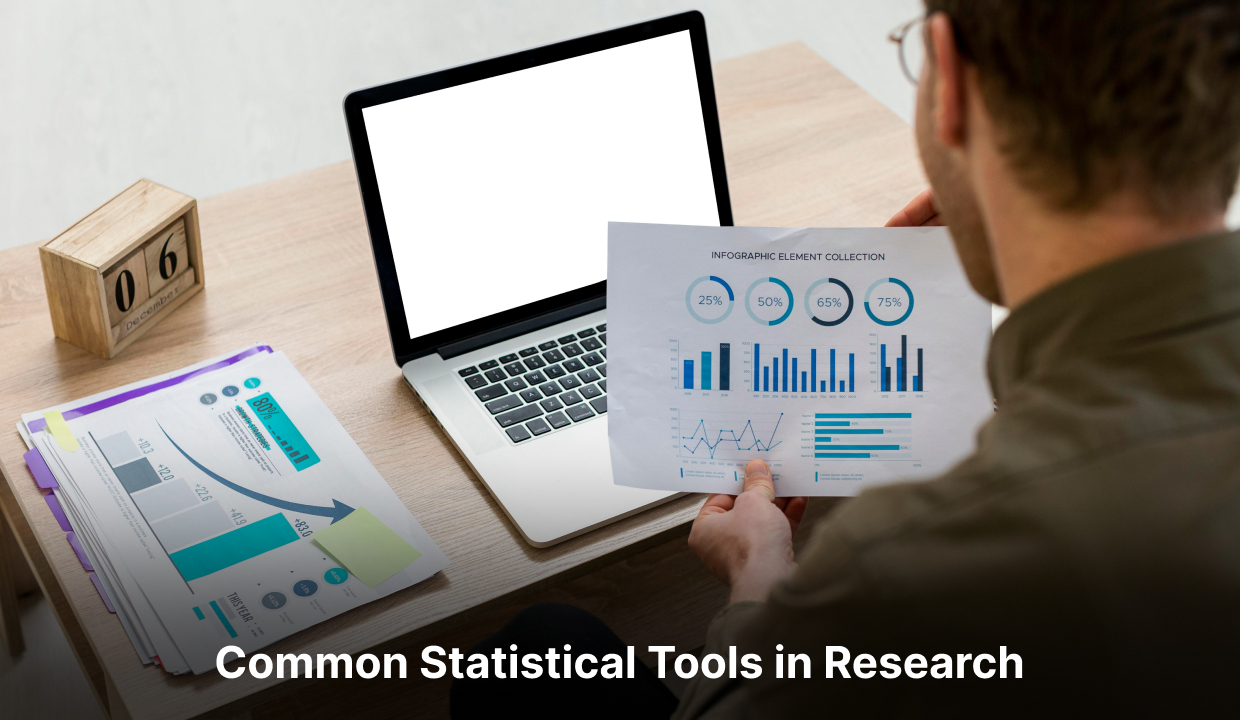Common statistical tools in research and data analysis Descriptive Statistics
Common statistical tools in research and data analysis
-
-
-
Descriptive Statistics
-
-
Descriptive statistics provide a summary of the main characteristics of a dataset. These include mean, median, mode, standard deviation, variance, range, and percentile. These statistics help researchers understand their data’s central tendency, variability, and distribution.
-
-
-
-
Inferential Statistics
-
-
-
Inferential statistics are used to make inferences or generalisations about a population based on a sample of data. They include hypothesis testing and estimation techniques such as confidence intervals. Inferential statistics help researchers draw conclusions and make predictions from their data.
-
-
-
-
T-Test
-
-
-
T-Test is used to compare means between two groups or conditions. They determine whether there is a significant difference between the means of the two groups or if the difference is due to chance. Different types of t-tests exist, including independent samples t-tests, paired samples t-tests, and one-sample t-tests.
-
-
-
-
Analysis of Variance (ANOVA)
-
-
-
ANOVA compares means among three or more groups or conditions. Determines whether there are significant differences between the means of multiple groups. ANOVA can be one-way (one independent variable) or factorial (multiple independent variables).
-
-
-
-
Regression Analysis
-
-
-
Regression analysis is a statistical method to investigate the connection between a dependent variable and one or multiple independent variables. It helps researchers understand how changes in the independent variable affect the dependent variable. Simple linear regression, multiple regression, and logistic regression are common types of regression analysis.
-
-
-
-
Chi-Square Test
-
-
-
Chi-Square Test assesses the relationship between two categorical variables. It determines whether the observed frequencies of the variable differ significantly from the expected frequencies. Chi-square tests are often used in contingency table analysis and goodness-of-fit tests.
-
-
-
-
Correlation Analysis
-
-
-
Correlation analysis examines the relationship between two continuous variables. It measures the strength and direction of association using correlation coefficients such as Pearson’s. Correlation analysis helps researchers understand the degree of linear relationship between variables.
-
-
-
-
Factor Analysis
-
-
-
Factor analysis is used to detect patterns of correlations among a large set of variables. It identifies the underlying latent factors explaining the observed variables’ relationship. Factor analysis is commonly used in psychometrics and the social sciences.
-
-
-
-
Time series analysis
-
-
-
Time series analysis is applied to data collected over time to identify patterns, trends, and seasonality. It helps researchers predict future values and understand the data dynamics. Techniques used in time series analysis include the autoregressive integrated moving average (ARIMA) model and exponential smoothing.
-
-
-
-
Cluster Analysis
-
-
-
Cluster analysis is used to classify objects or cases based on their similarity or dissimilarity. It helps to identify homogeneous subgroups within the dataset. Techniques such as K-means and hierarchical clustering are commonly used in cluster analysis.

Conclusion
Standard statistical tools are vital for research and data analysis, enabling researchers to gain meaningful insights, make informed decisions, and draw valid conclusions.